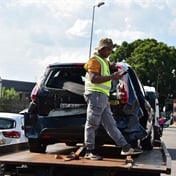
Ever wondered what to do if you witness a loved one being electrocuted?
Every year there are stories of children being electrocuted by illegal connections while they are out playing with their friends.
Each tragedy has highlighted that electricity can be fatal, and it is very important to know what to do to rescue a victim before the ambulance arrives.
Read more | Lightning is a killer – here's how to keep safe
Electricity can cause severe injury or death by causing a person's heart or lungs to stop working. Injuries from an electric shock may occur to muscles, like the heart or the brain, or any bones and other organs in the body.
It can also cause minor to severe burns, usually worse at the point of contact with the electrical source. Some burns may appear to be minor but they are still serious because although they may not look bad, the damage is internal in the vital organs and skin tissue.
If you see someone being electrocuted, it is important to approach with caution. You should not touch them with your bare hands, as they may not be able to remove themselves from the electrical source.
Our bodies are good conductors of electricity, so if you touch the person while they are connected to the electrical source, the electricity will flow through your body and give you a shock as well.
Read more | Cover your health with care – there's a lot to consider when choosing a medical aid
Here are seven ways to help someone who has been electrocuted:
1 Do not attempt to pull them from the electrical source with your bare hands. You may be electrocuted too.
2 Do not move someone who has been shocked unless they are still in danger of being shocked again.
3 Try to turn off the source of the electricity. If you can't, remove the source of electricity from the person using a piece of insulating material, such as a length of wood.
4 Once you have removed the victim from the electrical source, check to see if the person is breathing and if they have a pulse.
5 If they show signs of shock, lie them down and, if possible, position the head slightly lower than the trunk with the legs elevated.
6 Don't go near high-voltage wires until the power is turned off. Stay at least six metres away, farther if wires are jumping and sparking.
7 Call medical emergency services if the person has trouble breathing, loses consciousness, has seizures, muscle pain or numbness, or is feeling heart symptoms like a fast heartbeat.



















